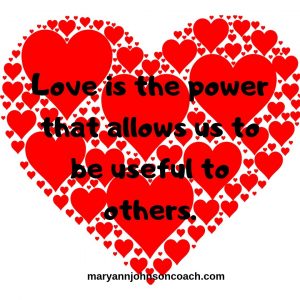
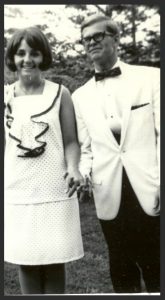 I’ve been married to the same man for 48 years. We celebrated this milestone in May of 2019. This has caused me to pause and contemplate the last fifty-one years. That’s how long I’ve known my husband, Don. I fell in love with him because he was handsome and romantic. One day he showed up at my door with a car full of roses. He had cleaned out a street vendor! But that isn’t why I’ve stayed with him.
I’ve been married to the same man for 48 years. We celebrated this milestone in May of 2019. This has caused me to pause and contemplate the last fifty-one years. That’s how long I’ve known my husband, Don. I fell in love with him because he was handsome and romantic. One day he showed up at my door with a car full of roses. He had cleaned out a street vendor! But that isn’t why I’ve stayed with him.
We grow old and our beauty fades a bit. Our middles fill out and things begin to sag. We aren’t as beautiful as we were. Romance begins to fade too. Our energy and imagination aren’t as strong. So, his face and romance haven’t kept me by his side. It has been a choice.
Love isn’t just a feeling. When we’re young we think that’s what it is, but it isn’t. It’s a choice that we make repeatedly as we surmount the obstacles of living with another person.
Don has long since stopped bringing carloads of roses. However, I know he loves me because he serves  me. He often goes out of his way to do something he knows I need to have done. He looks at me when I am talking to him. He takes the time to listen. He doesn’t always get what I am saying but he listens and tries. : ) He often puts his needs ahead of mine.
me. He often goes out of his way to do something he knows I need to have done. He looks at me when I am talking to him. He takes the time to listen. He doesn’t always get what I am saying but he listens and tries. : ) He often puts his needs ahead of mine.
One of my favorite definitions of love came by way of my friend and mentor, Audrey Rindlesbacher http://audreyrindlisbacher.com/ – “Love is the will to extend one’s self for the purpose of nurturing one’s own or another’s spiritual growth.” M. Scott Peck
Love is not just a feeling; it’s also a doing. It’s what we decide to do to nurture another soul.
When we’re parenting children, we must decide to demonstrate our love to our kids despite their growing pains and messes.
It isn’t enough to just say the words ‘I love you’. Our children need to feel our love through our actions every day.
Five simple ways that you can say I LOVE YOU daily
•STOP doing whatever it is when your child needs to talk to you. You may not have time to do whatever it is they need right then but you can hear what they say and respond. When you stop and listen it sends the very clear message that they matter more than the phone, the computer, the laundry, or any other thing.
•LOOK your child in the eye. We all want to know that we are seen and heard. Even children know when they don’t have your attention. When you look someone in the eye it helps you stay focused on them. It increases your ability to hear. It helps you stay present in the moment.
•LISTEN for understanding. You can’t hear what’s being said if your mind is busy looking for a solution to their problem or figuring out how to teach. Active listening seeks to hear for understanding. Teaching and problem solving can come later.
Most of us have had the unnerving experience of being in a conversation and knowing the other person’s mind is in another place. You’re sure they don’t hear you even as they nod their heads as if they do. It’s interesting how often moms and dads think they’re sending positive, connected messages to their children, when in fact, their children are experiencing this kind of disconnect.
•TOUCH them in an appropriate way, a pat on the back, a touch on the shoulder. Making a physical connection when another person is trying to share is powerful in building confidence and trust.
•REMAIN CALM. Our response to whatever is happening is in our control. If we explode, we choose to. I know this is hard to hear. As a recovered rager I know that it’s a choice and you can learn to remain calm.
 There is a space between stimulus and response. Sometimes it’s so narrow that you would swear it isn’t even there. But it is and you can learn to recognize the moment of choice. You will still respond poorly for a time, but eventually, that space between stimulus and response will get wider and you will have time to choose a better response. I promise this is true!
There is a space between stimulus and response. Sometimes it’s so narrow that you would swear it isn’t even there. But it is and you can learn to recognize the moment of choice. You will still respond poorly for a time, but eventually, that space between stimulus and response will get wider and you will have time to choose a better response. I promise this is true!
When you’re busy, angry, or overwhelmed these simple things may feel hard. But they are a choice. You choose to work on them daily until they become habits. You choose to do this work in order to send better messages to your children.
When you make that effort and then consistently do them it will increase your child’s confidence in your relationship and in themselves. They will know that they are of value to you, that they matter. They will know deep down that they are seen and heard. They will know that you really do love them.
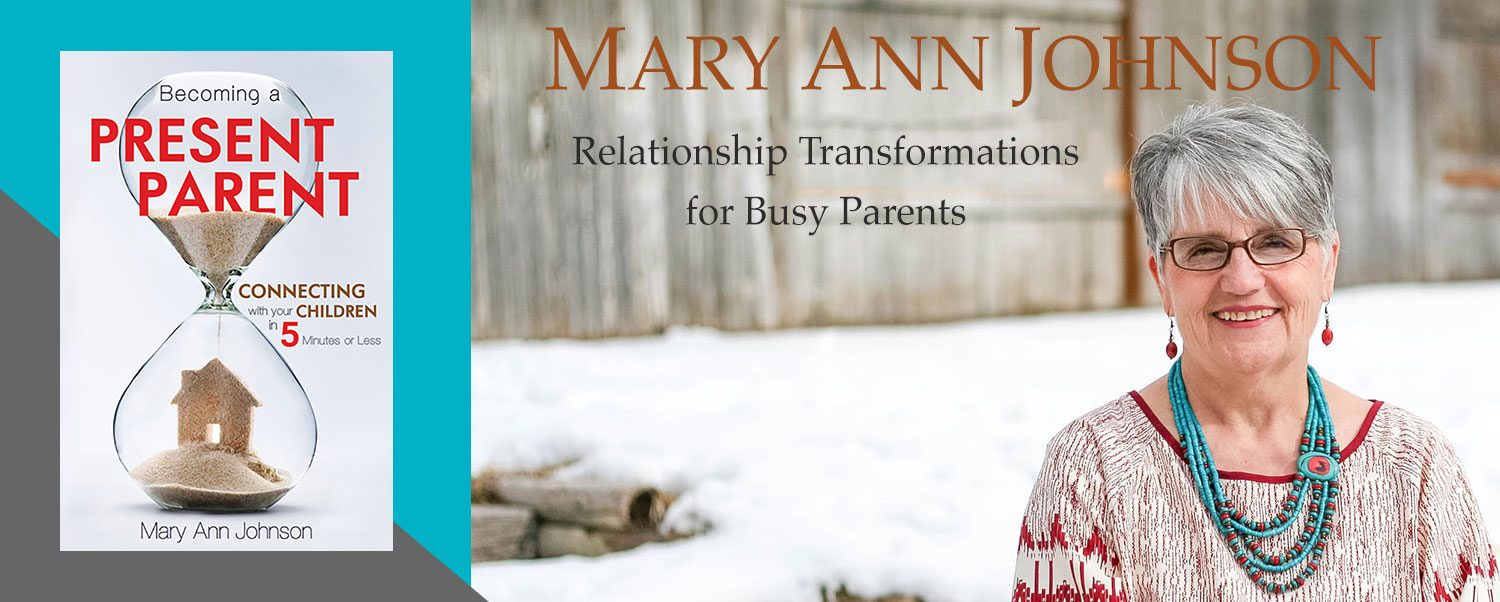


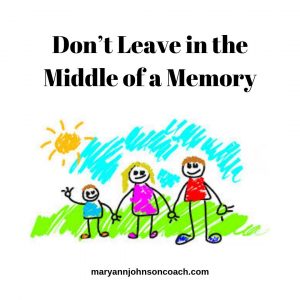

 One of my sisters decided to finish her basement and hired another sister and her husband to do the job. It’s important to know that they aren’t contractors but thought they could do the job. My sister, Nanette, went to Google to learn how it was done. She estimated that it would take them about two weeks.
One of my sisters decided to finish her basement and hired another sister and her husband to do the job. It’s important to know that they aren’t contractors but thought they could do the job. My sister, Nanette, went to Google to learn how it was done. She estimated that it would take them about two weeks.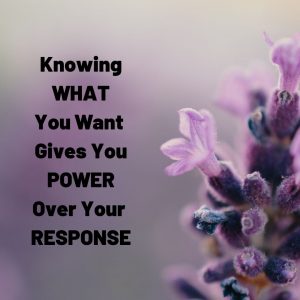 whether my sister should have said yes. It’s more a question of what my sister wanted.
whether my sister should have said yes. It’s more a question of what my sister wanted.
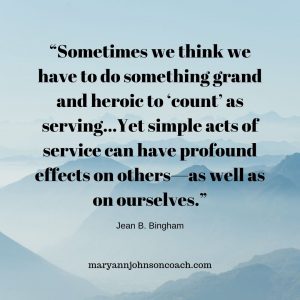


 There’s a tree in our back yard that is growing faster on one side than on the other. The other morning my daughter gave me her impression as to why this tree is so lopsided.
There’s a tree in our back yard that is growing faster on one side than on the other. The other morning my daughter gave me her impression as to why this tree is so lopsided. we could I built garden boxes for my patio and I’ve tended them with loving care. I feed them and I prune them. I deadhead the flowers every day, so they’ll keep blooming. I water. I am consistent.
we could I built garden boxes for my patio and I’ve tended them with loving care. I feed them and I prune them. I deadhead the flowers every day, so they’ll keep blooming. I water. I am consistent.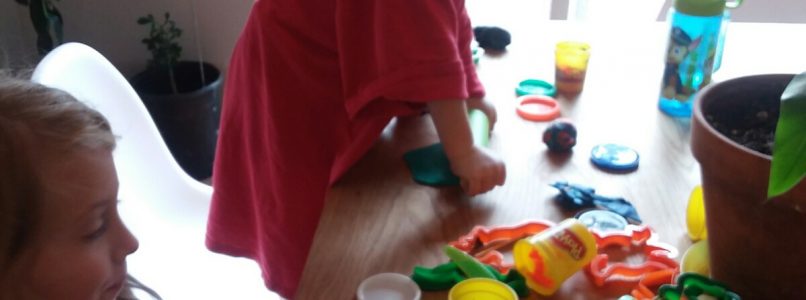
 comes with summer. BUT summer can be a very busy time. Sometimes the pace outstrips my ability to keep up.
comes with summer. BUT summer can be a very busy time. Sometimes the pace outstrips my ability to keep up. the winter with the free range chickens. Then totally covered over early spring until the chicken run was done and they were contained.
the winter with the free range chickens. Then totally covered over early spring until the chicken run was done and they were contained. 
 daughter’s family. New babies are so wonderful! I helped them landscape the front yard. Whew, that was a lot of work. They waited until I got there because they had this idea that I know a lot about plants, how they grow, how to design gardens, etc. Yikes! It was a real adventure at the greenhouse picking everything out. It was an even greater adventure designing and planting everything. However, it turned out great and we got some good together time in the bargain.
daughter’s family. New babies are so wonderful! I helped them landscape the front yard. Whew, that was a lot of work. They waited until I got there because they had this idea that I know a lot about plants, how they grow, how to design gardens, etc. Yikes! It was a real adventure at the greenhouse picking everything out. It was an even greater adventure designing and planting everything. However, it turned out great and we got some good together time in the bargain.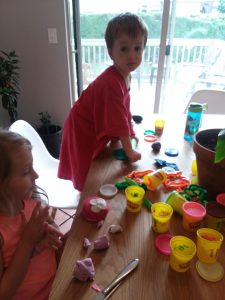 front door. The kids LOVED that. I learned all about play dough and the wonderful things that kids can create. : ) Then we moved on to bubble snakes. We also built and exploded a volcano because Elliott like everything prehistoric.
front door. The kids LOVED that. I learned all about play dough and the wonderful things that kids can create. : ) Then we moved on to bubble snakes. We also built and exploded a volcano because Elliott like everything prehistoric.
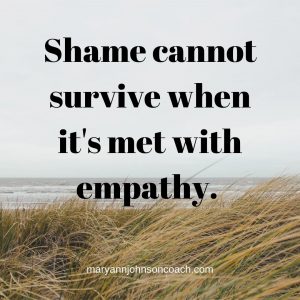 Here is the definition of shame – a painful feeling of humiliation or distress caused by the consciousness of wrong or foolish behavior.
Here is the definition of shame – a painful feeling of humiliation or distress caused by the consciousness of wrong or foolish behavior.
 Every parent is made up of a measure of good,
Every parent is made up of a measure of good, 
 What if you went Screen-Free, as a family, for a WHOLE MONTH!! Do you think you could do it? Would your family go nuts? Would everyone crack up? Would the fighting increase? Yikes!! A whole month!!
What if you went Screen-Free, as a family, for a WHOLE MONTH!! Do you think you could do it? Would your family go nuts? Would everyone crack up? Would the fighting increase? Yikes!! A whole month!!
 We all have traditions. Our family had many traditions. Some were built around holidays or special family days. Many were built around spiritual and religious beliefs.
We all have traditions. Our family had many traditions. Some were built around holidays or special family days. Many were built around spiritual and religious beliefs.